Essalamus
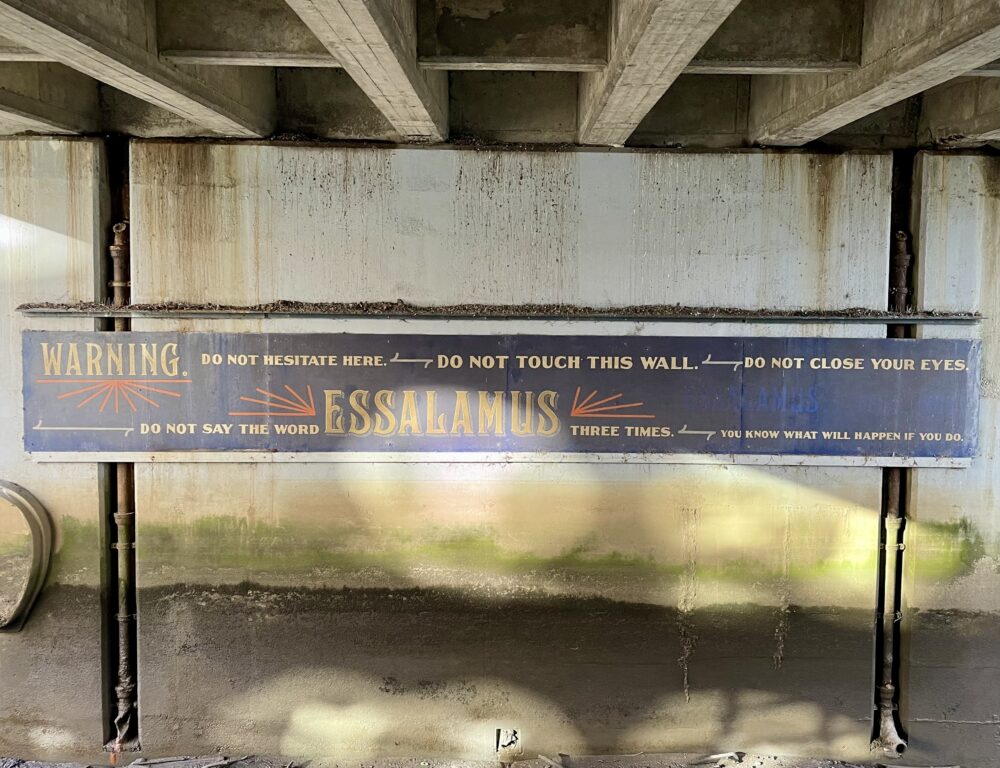
I can’t believe that I’ve never featured this sign on the blog before, yet I can’t find a previous mention.
This post was filed under: Art, Newcastle-upon-Tyne, Ouseburn.

I can’t believe that I’ve never featured this sign on the blog before, yet I can’t find a previous mention.
This post was filed under: Art, Newcastle-upon-Tyne, Ouseburn.
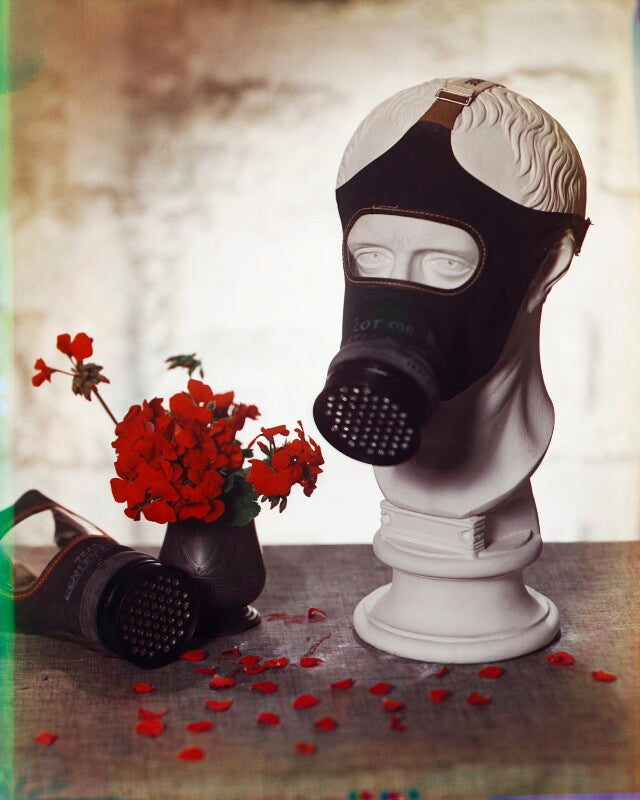
This exhibition has recently transferred from the National Portrait Gallery to The Laing. Before visiting, I knew nothing about Yevonde, but I came away with a real appreciation for her life and work. She was a photographer who developed her practice in the period between the two World Wars, and who was a pioneer of the use of colour photography. There were several strands running through the exhibition that stood out to me.
The exhibition did a good job of helping me to understand how colour photography initially developed. It was a simple process involving taking multiple simultaneous images effectively through multiple cameras, with coloured filters in front of each one. These could then be developed using coloured inks and composited to create a colour image. It’s a simple and logical process, but one that was entirely new to me.
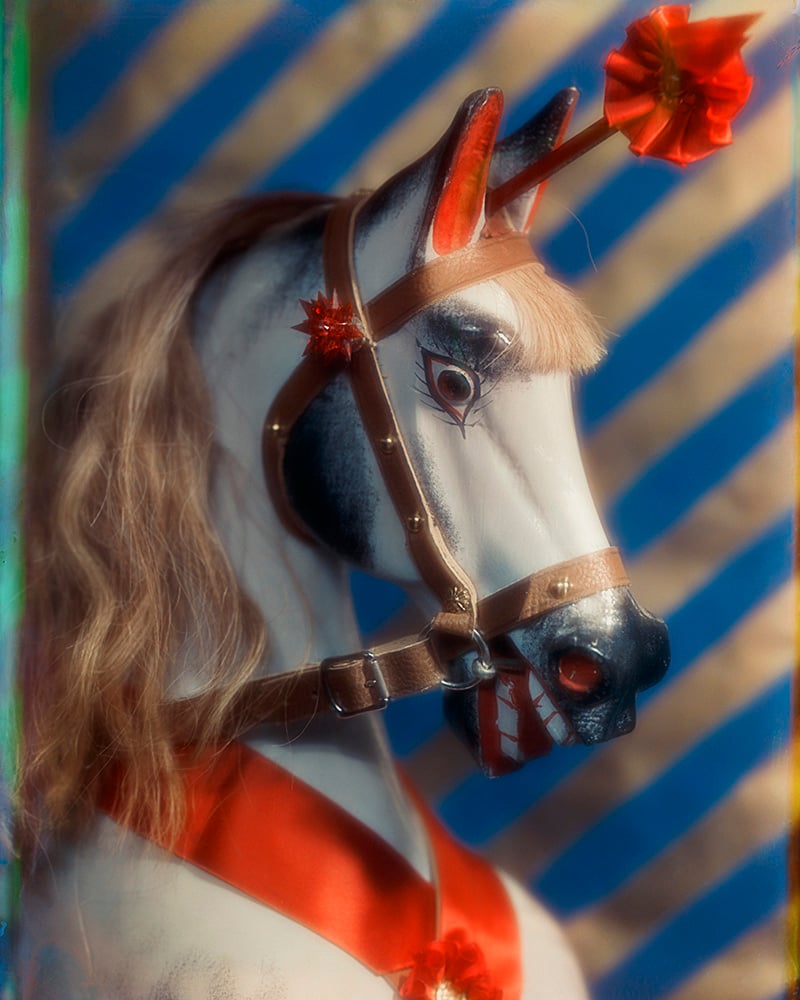
Yevonde developed a distinctive style for her colour photography:
If we are going to have colour photography, for heaven’s sake, let’s have a riot of colour.
My colour perception is pretty poor, but even so, the Vivex photography combined with Yevonde’s compositions seemed stunning vivid on the gallery walls, almost hyperreal. This is perhaps most celebrated in her work photographing women dressed as goddesses.
The exhibition included a small goddess-inspired dressing up corner, and during my visit, this was occupied by a woman who seemed to be having the time of her life, alone in front of the mirror. More power to her.
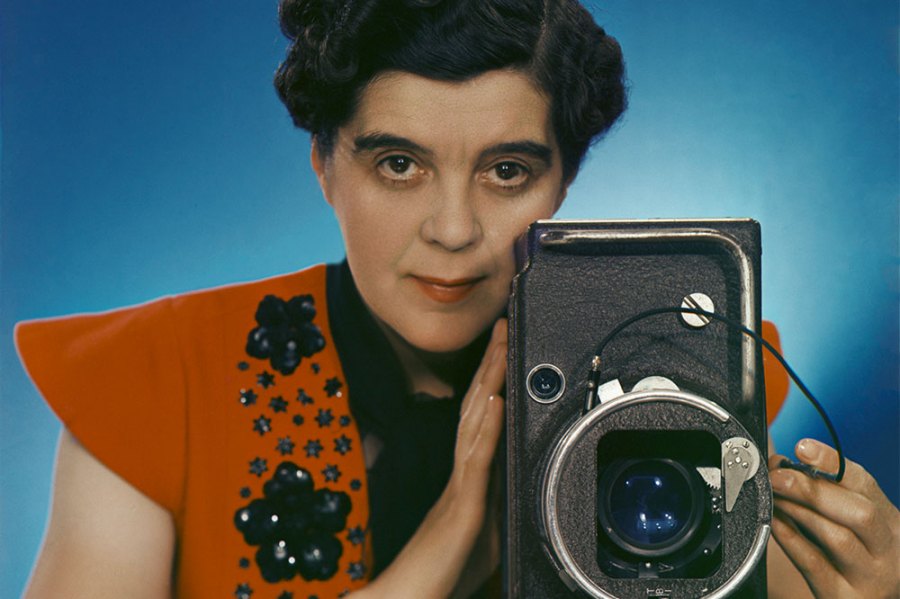
I was interested in Yevonde’s feminism, which was well represented in the exhibition. Most of the human subjects featured in her work were female, and it was suggested that much of her early interested in photography was driven by a desire to be independent.
The duties of a wife with a separate career have yet to be defined, and although complete unselfishness, has always been considered a sure foundation for domestic happiness, I am not convinced.
The curators placed one of the largest of Yevonde’s self-portraits alongside this quotation:
This is not the story of a woman’s life, but the story of a photographer that happens to be a woman.
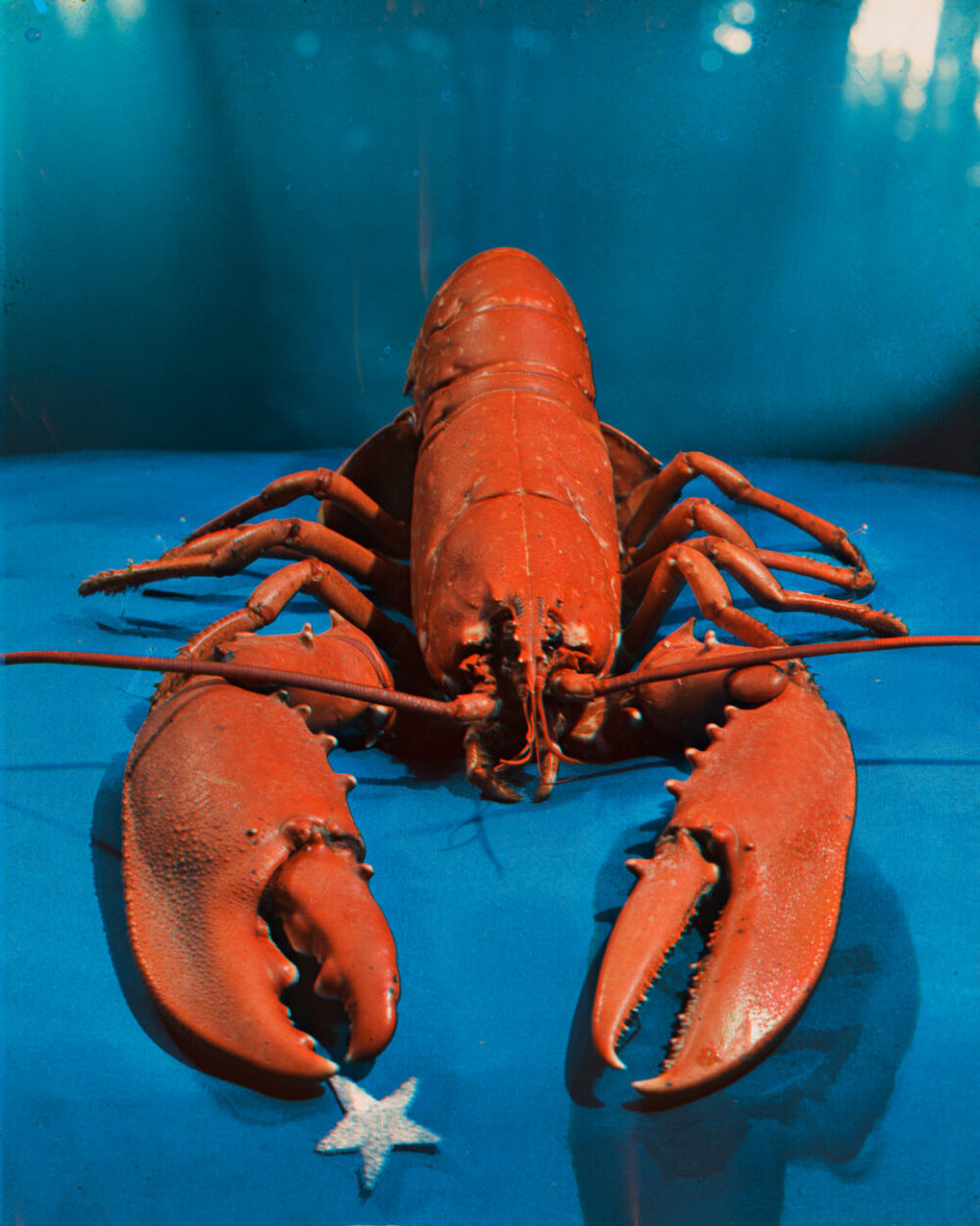
Almost exactly a year ago, I enjoyed the Design Museum’s exhibition on Surrealism. I was therefore interested to see in this exhibition the interaction between Yevonde’s photography, and colour photography more generally, and surrealism. It is surely no accident that the often bright colour of surrealist work came about just as colour photography was beginning to make a splash.
All things considered, I thought this was a great exhibition. I learned things from it and gained new insights and perspectives on the art featured. It was well worth a visit.
Yevonde: Life and Colour continues at The Laing until 20 April.
This post was filed under: Art, Newcastle-upon-Tyne, The Laing, Yevonde.
This exhibition brings together work by twenty artists from around the world, intending to prompt reflection on how humans interact with the natural world.
Two installations particularly stood out to me.
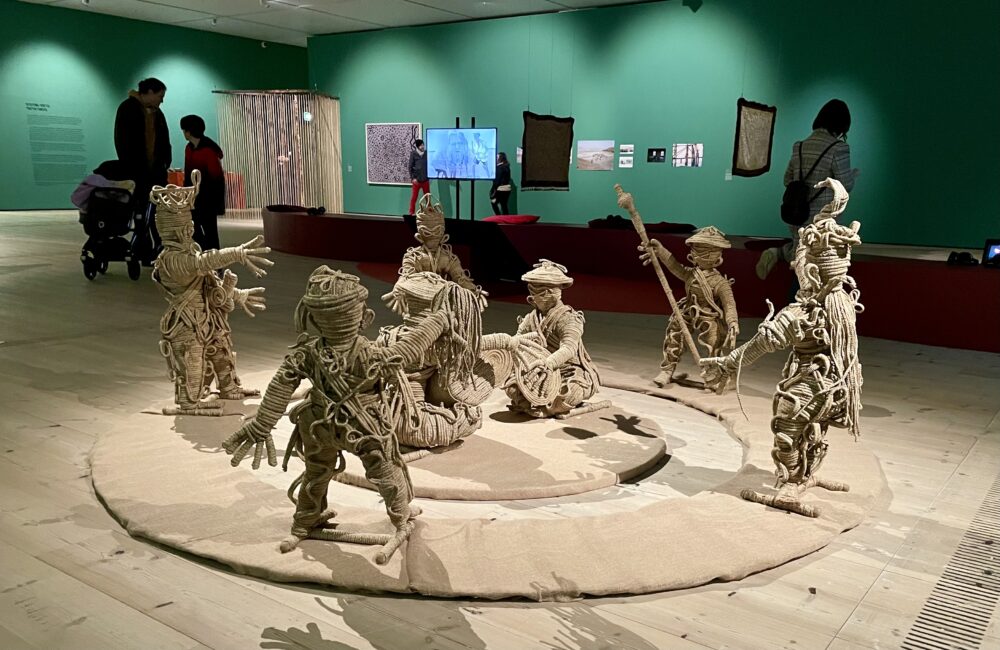
This is Kaal (Time), a 2023 work by Kamruzzaman Shadhin and the Gidree Bawlee Foundation of Arts, which Shadhin founded. It’s a striking collection of seven hand-woven jute sculptures on aluminium frames. They are captured performing Bishahari Pala, a folk theatre work.
The work effectively combines a representation of the land and the people it sustains. There is something quite endearing about the characters; they look like they must have taken many hours to weave.
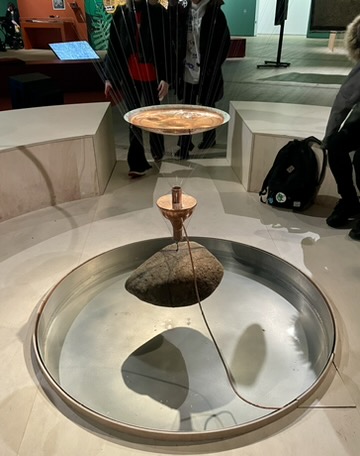
This is part of a dynamic water installation called Templo del agua, río Tyne by Leonel Vásquez of Colombia. Drops of purified water from the River Tyne fell through the complicated apparatus and created musical notes, which were both audible and physically sensed through the vibration of the benches.
Rocks from the Tyne hung around the space, which Vásquez describes as a ‘temple’.
Despite being in the middle of a crowded gallery of works, the combination of water and acoustics made this space feel quasi-religious or meditative. It was a quite captivating piece.
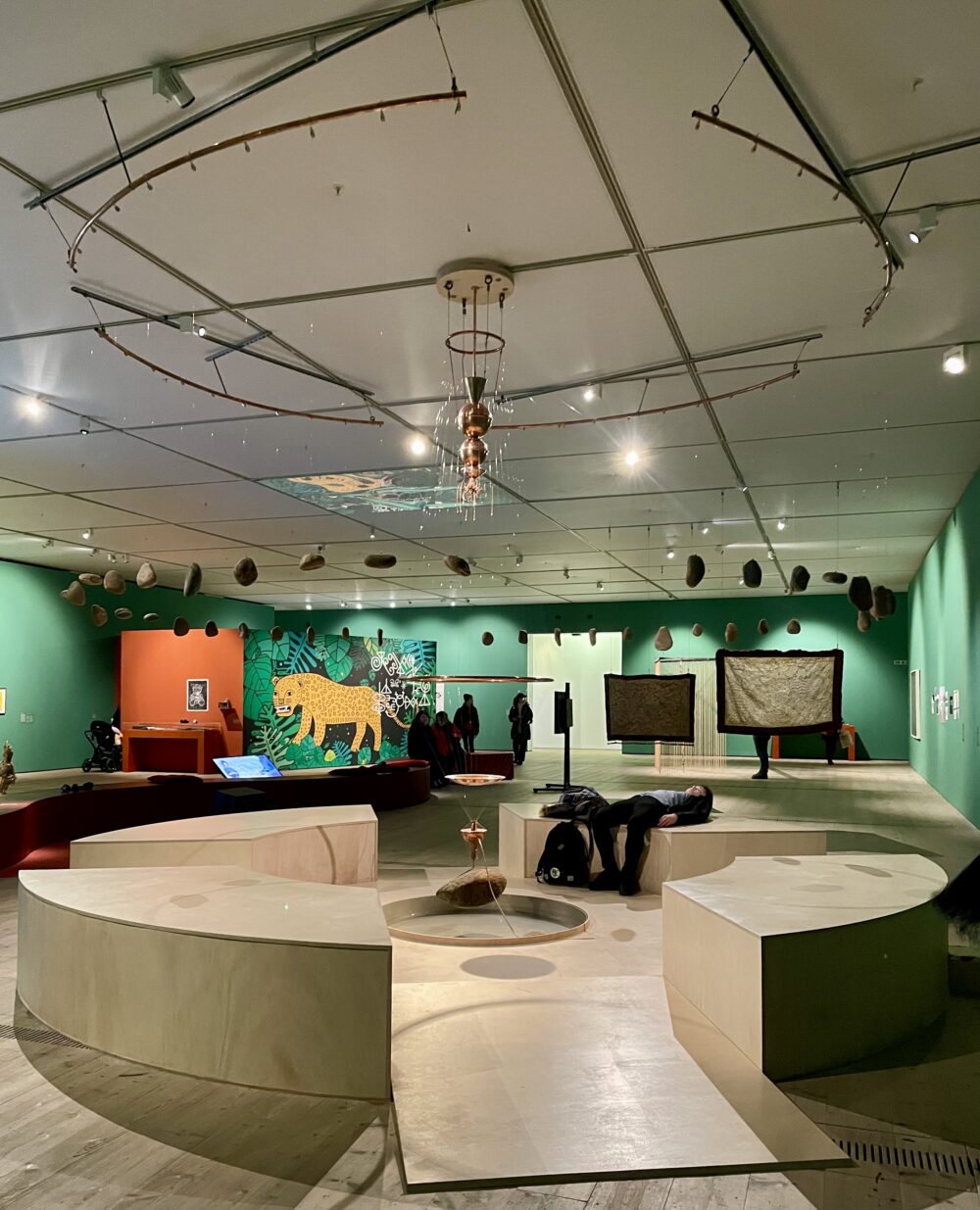
Stepping Softly on the Earth continues at Baltic until 14 April.
This post was filed under: Art, Baltic, Gateshead, Kamruzzaman Shadhin, Leonel Vásquez.
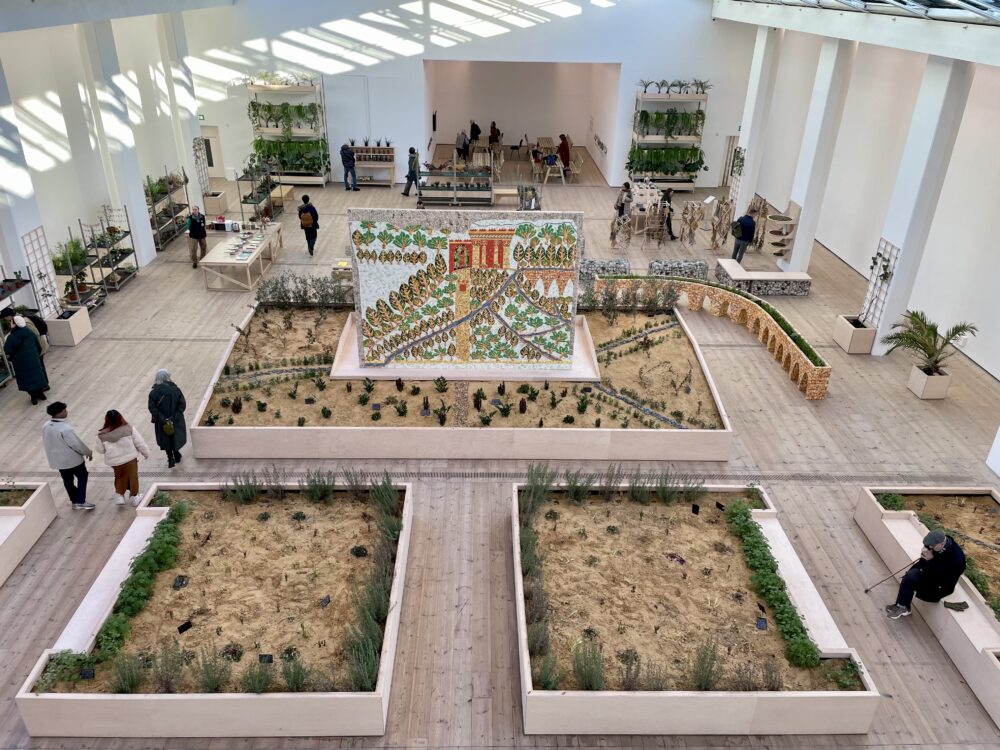
Having recently seen Connecting Histories, This botanical art installation by Michael Rakowitz ought to have held particular resonance. Like Connecting Histories, there’s a plant-based exploration of colonialism. However, The Waiting Gardens of the North intends to reflect current, rather than historical, experiences.
By planting a ‘garden’ in which different plants are at different stages of the life cycle, Rakowitz intends to explore the strange ‘pause’ in life caused by waiting for asylum applications to be processed: a time when people are caught between the past and an uncertain future.
The central feature of the installation is a collage made of food packaging from local West Asian, South Asian and African grocery stores.

But honestly, I’m telling you most of that from reading the interpretation panels. I don’t think I’d have derived it for myself in a month of Sundays. Wendy commented that it felt like wandering around a particularly good garden department in a branch of B&Q, and I find it hard to disagree.
The nature of art means that, sometimes, the artist’s vision for an installation won’t meaningfully connect with some viewers. This was the case for me with this one. I don’t think I would ever have appreciated that Rakowitz was aiming for ‘a metaphorical space where the potential for growth, transformation, and resistance can take root.’
But that’s okay because I’m sure some viewers will love it.
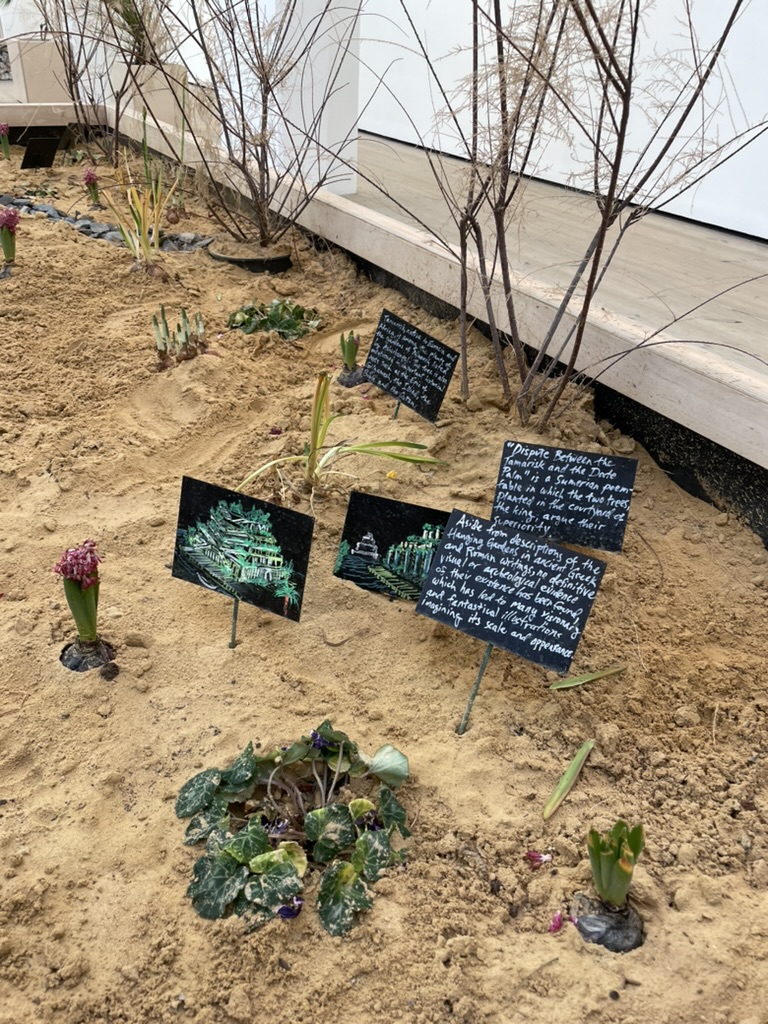
The Waiting Gardens of the North continues at Baltic until 26 May.
This post was filed under: Art, Baltic, Gateshead, Michael Rakowitz.
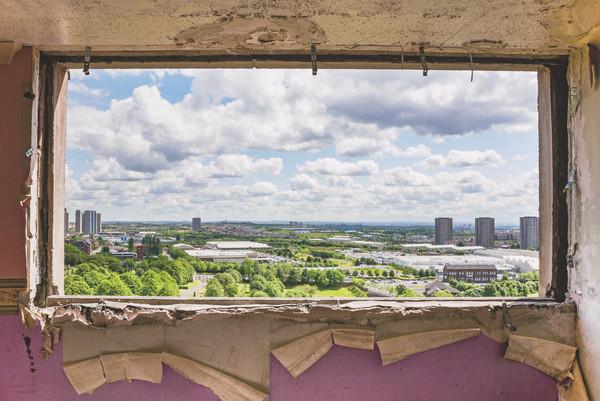
The Scottish National Portrait Gallery isn’t an immediately obvious place to host an exhibition of photographs of architecture, but there is an exciting resonance here. While the rest of the building is dedicated to representations of people, this exhibition comments on how physical space impacts people’s lives.
You don’t need a medical degree, nor even a Victoria Wood sketch of a medical school interview, to know that architecture can have a lasting impact on the life changes of individuals: poor housing exacerbates health inequalities, for example. Perhaps because of my profession, it was Chris Leslie’s photographs of Glasgow which particularly caught my eye.
We all know how the city’s 1960s towerblocks of ‘urban renewal’ turned out not to be a lasting solution, with many of the blocks being demolished after as little as forty years. It’s the backstory to any number of novels I’ve read in recent years if nothing else! Yet Leslie’s work brings home the human aspect of transforming the city’s landscape in a way that other representations haven’t. There is something about documentary photography that brings home the folly of the timescale and the impact of the displacement. It also made me wonder about the appalling ecological footprint of the schemes.
Leslie’s photograph Bird Man of Red Road drew out the social exclusion of the last residents of many of the flats, asylum seekers. I didn’t know of that particular temporary afterlife of the blocks, and it adds another strand to their story.
There was much more to contemplate in the exhibition, including a dizzying large-print photograph of a San Francisco lobby by Andreas Gursky, but I know that Leslie’s work will stay with me.
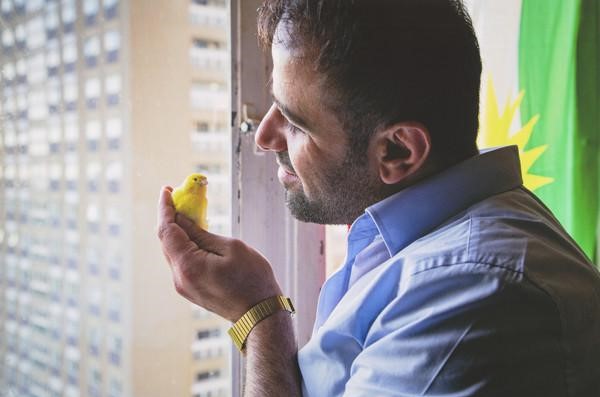
Making Space continues at the Scottish National Portrait Gallery until 3 March.
This post was filed under: Art, Andreas Gursky, Chris Leslie, Edinburgh, Glasgow, Scottish National Portrait Gallery.
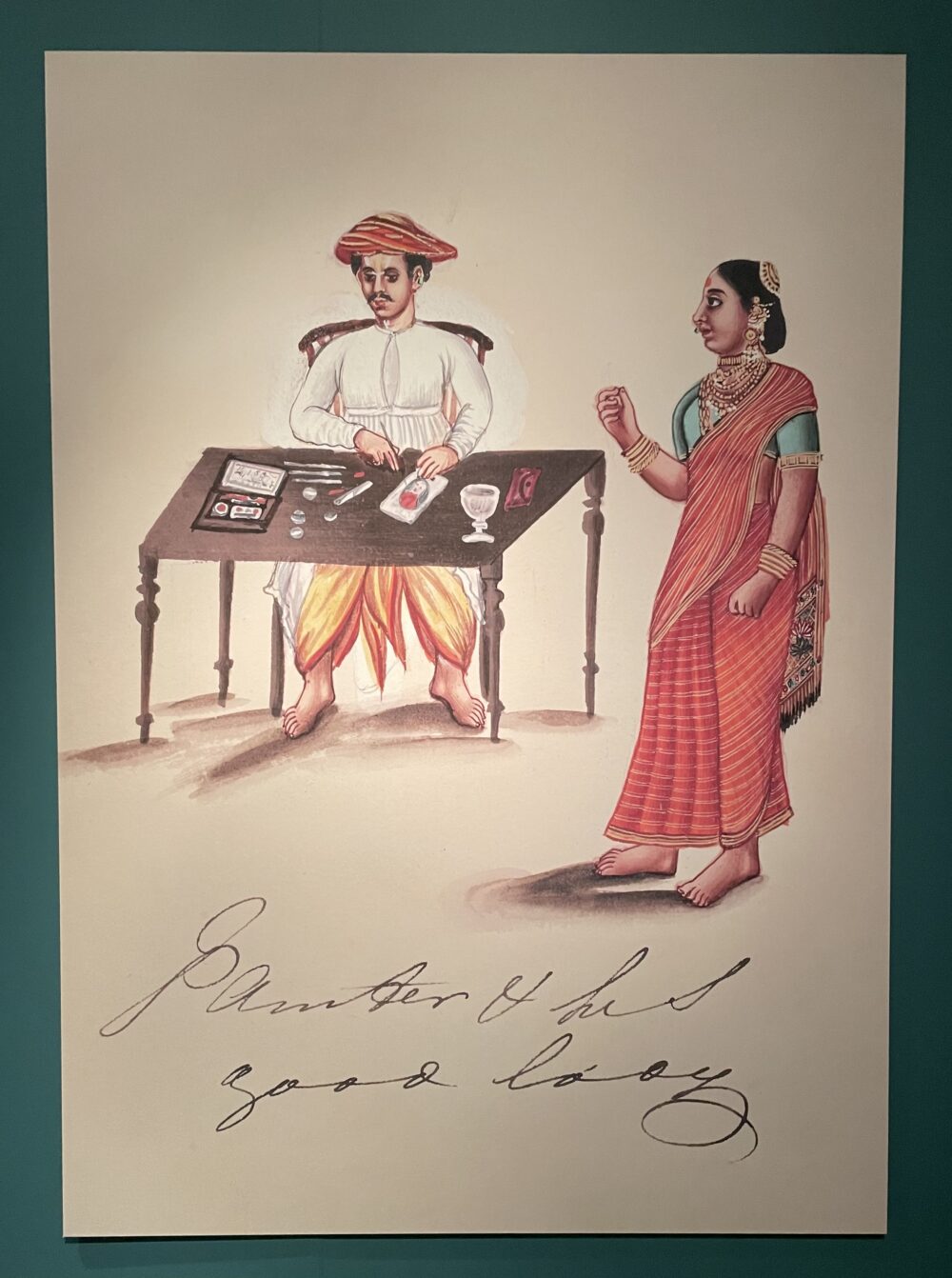
It’s a reflection of my own cultural biases that when reflecting on the impact of colonialism and the British Empire on botany, of all things, my mind leaps to the introduction of species to the UK. Plants such as fuchsias, geraniums and petunias arrived on our shores through a complex and uncomfortable web of international relations.
This exhibition made me think for the first time about how the movement of species is more complicated than things reaching British gardens. Empire introduced coffee and tobacco to India, for example, which I would ignorantly have assumed were native to India.
But this exhibition is really about reckoning with part of the Royal Botanic Garden Edinburgh’s colonial history. Its collection includes a significant number of botanical drawings by Indian artists commissioned by Scottish doctors employed by the East India Company. Doctors, of course, because the Garden’s primary function was medical. Very little is known about any of the artists: in many cases, not even their names.
This exhibition of their drawings, therefore, becomes not only an appreciation of their inherent beauty and accuracy but also a sad reflection. It reminds the visitor with marvellous clarity of the way that the Empire often failed to recognise the personhood of those on whose remarkable skills and talents it relied.
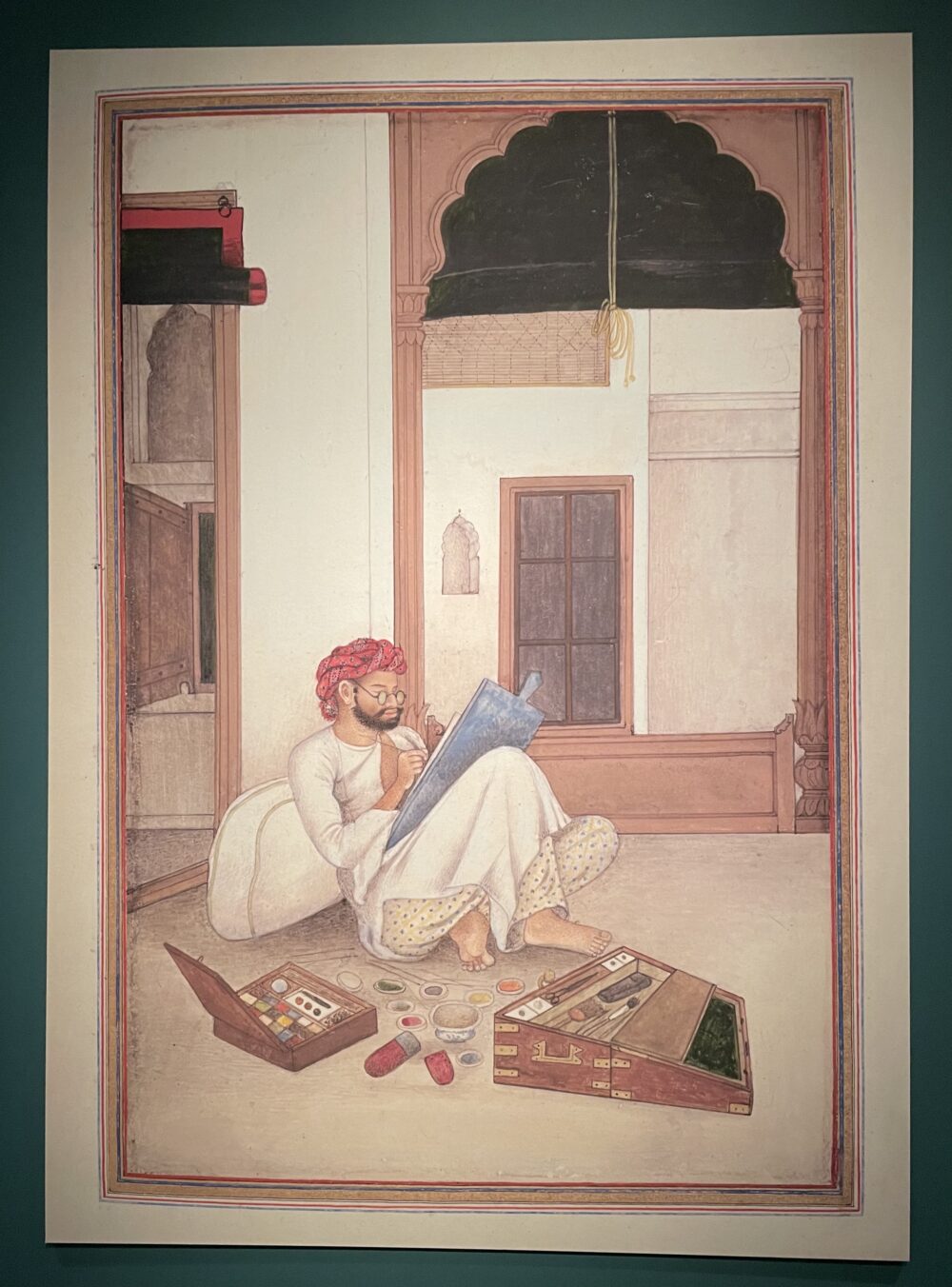
Connecting histories continues at the Royal Botanic Garden Edinburgh until 14 April.
This post was filed under: Art, British Empire, Edinburgh, Royal Botanic Garden.
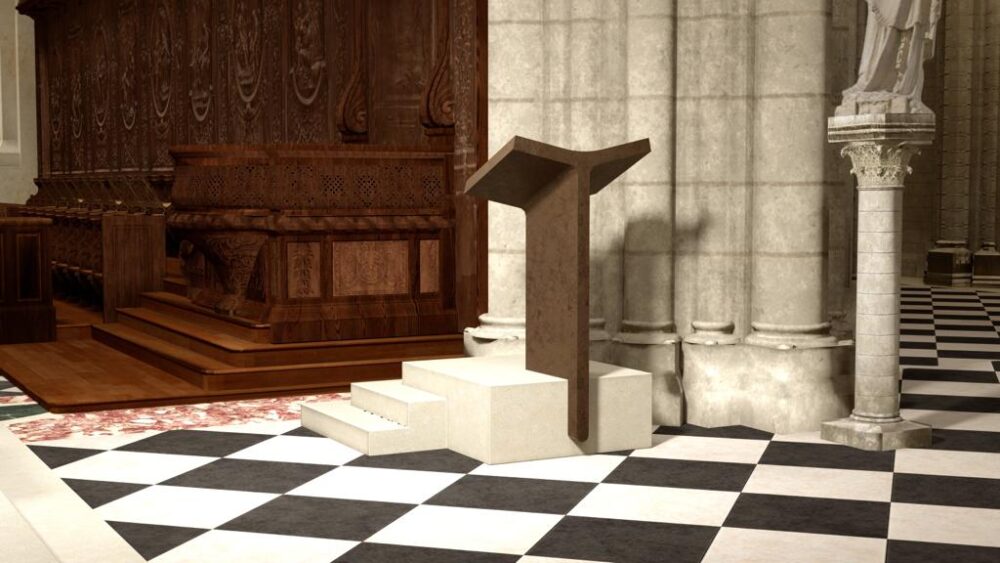
Back in May, I moaned about the uninspiring decision to rebuild Notre-Dame de Paris to be exactly the same as it was prior to the 2019 fire. In my view, it seemed to be an example of preservation at the expense of conservation, forcing the building into a frozen historical state that bears no relation to the changing needs of the building and the community around it.
Yet, I missed July’s announcement of Guillaume Bardet’s incredible minimalist liturgical furniture which is destined for the interior. The combination of boldness and simplicity is stunning, somehow both timeless and contemporary. The decision to create something functional and new, rather than just blindly replicating what came before, gives me a scintilla of hope about the whole project.
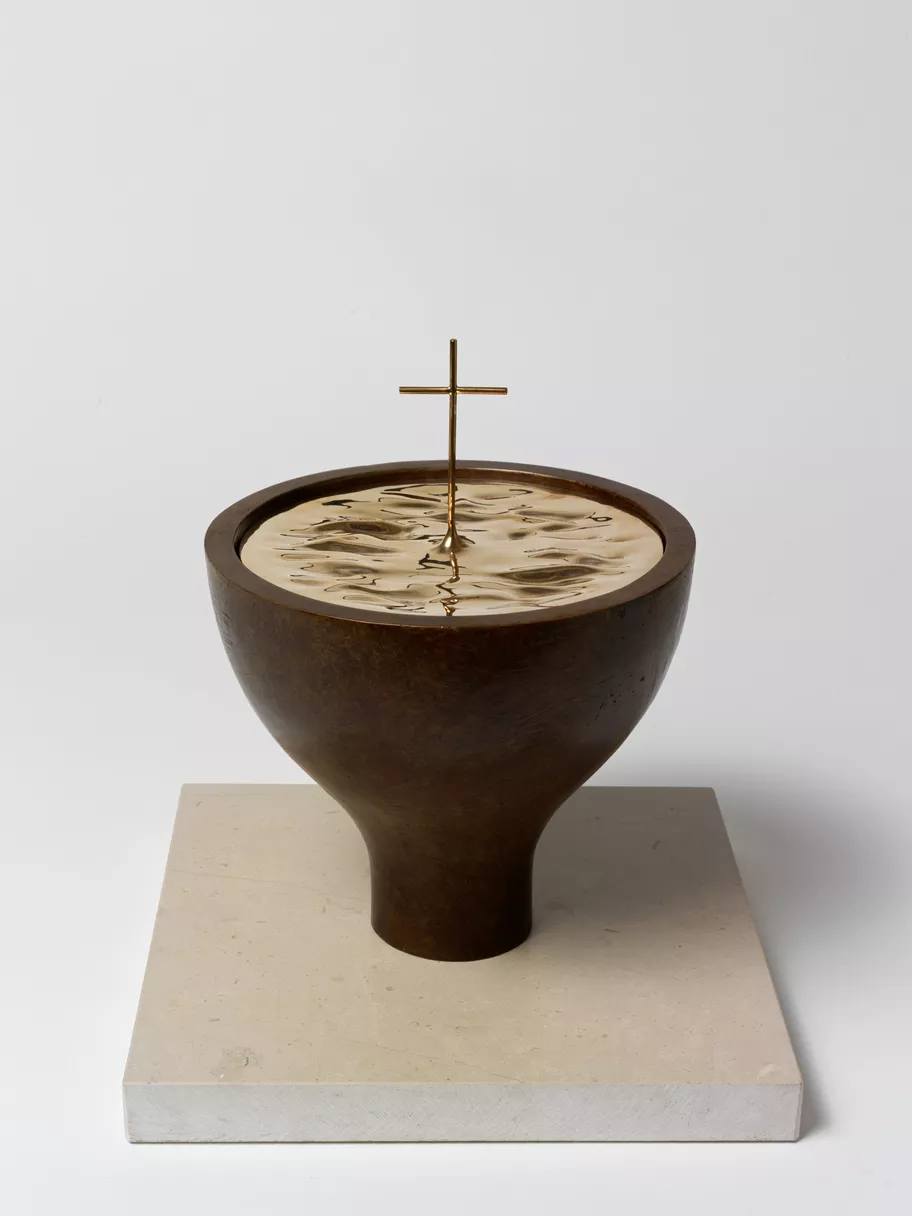
They may only represent a handful of objects, but they are among the most liturgically important objects in the building. Seeing the restoration take such a bold path on such important things gives me faith. Perhaps, after all, it is a more thoughtful restoration than the headlines suggested.
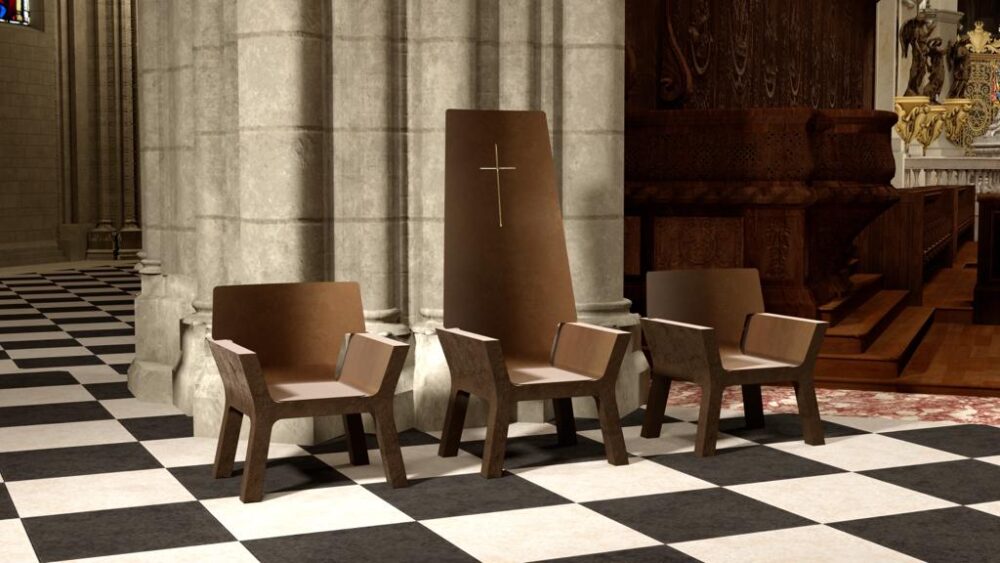
This post was filed under: Art, Post-a-day 2023, Guillaume Bardet, Notre Dame de Paris, Paris.
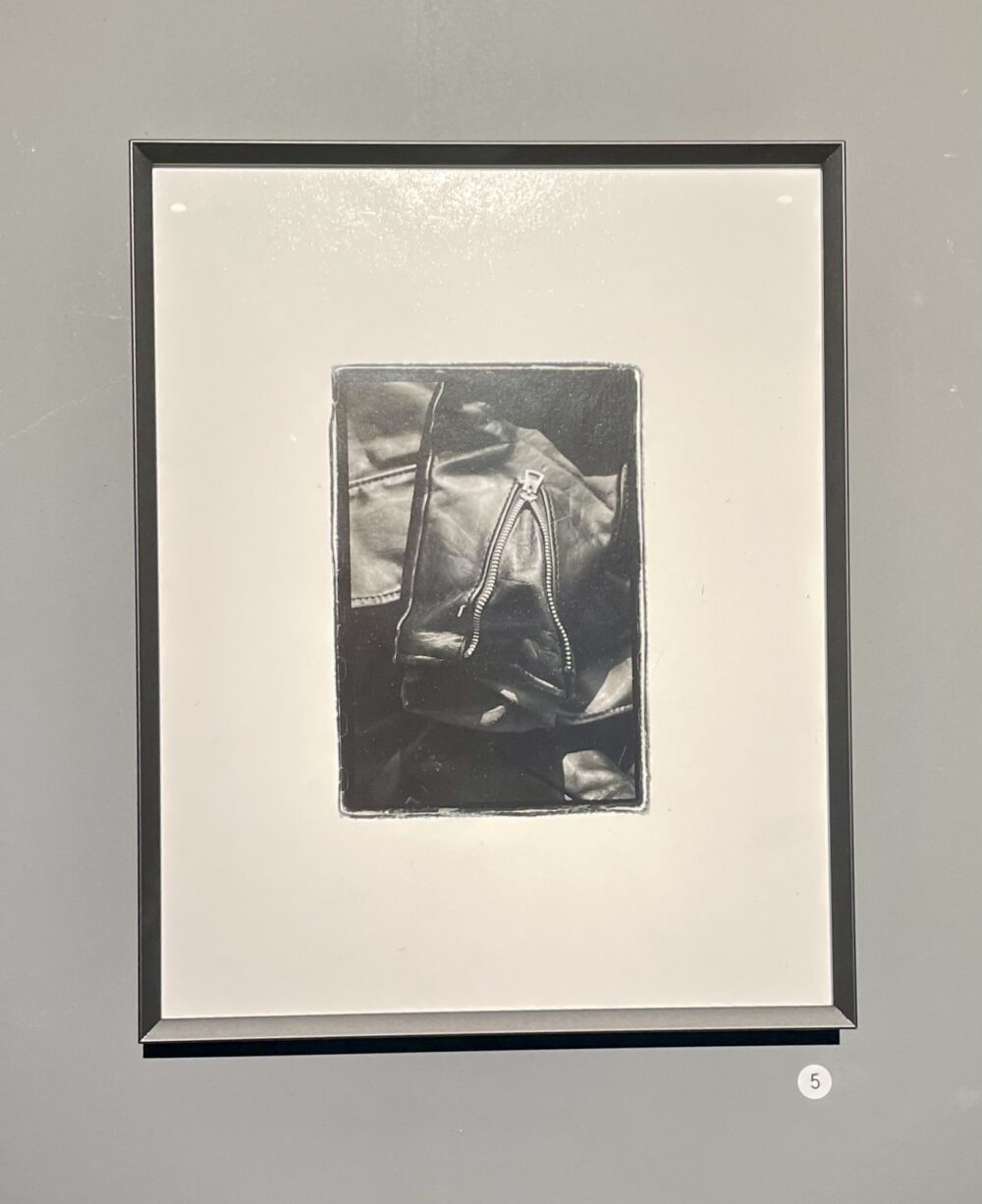
This is the first UK solo exhibition by Jade Sweeting. It features a small selection of 8×10 black-and-white photographs of parts of motorcyclists’ bike jackets and leathers. The pictures are accompanied by an audio recording of motorcycle noises, which the exhibition notes reveal to be from the artist’s own bike.
Unfortunately, this didn’t do anything for me. The notes say that it is ‘erotic, sensual and tender’ and that it explores the artist’s position as a woman in the male-dominated world of motorbikes. I didn’t get any of that; it seemed like a collection of interestingly composed photos of zips and stuff. Perhaps, in part, this is because I have no direct knowledge or experience of the subculture Sweeting explores in this exhibition.
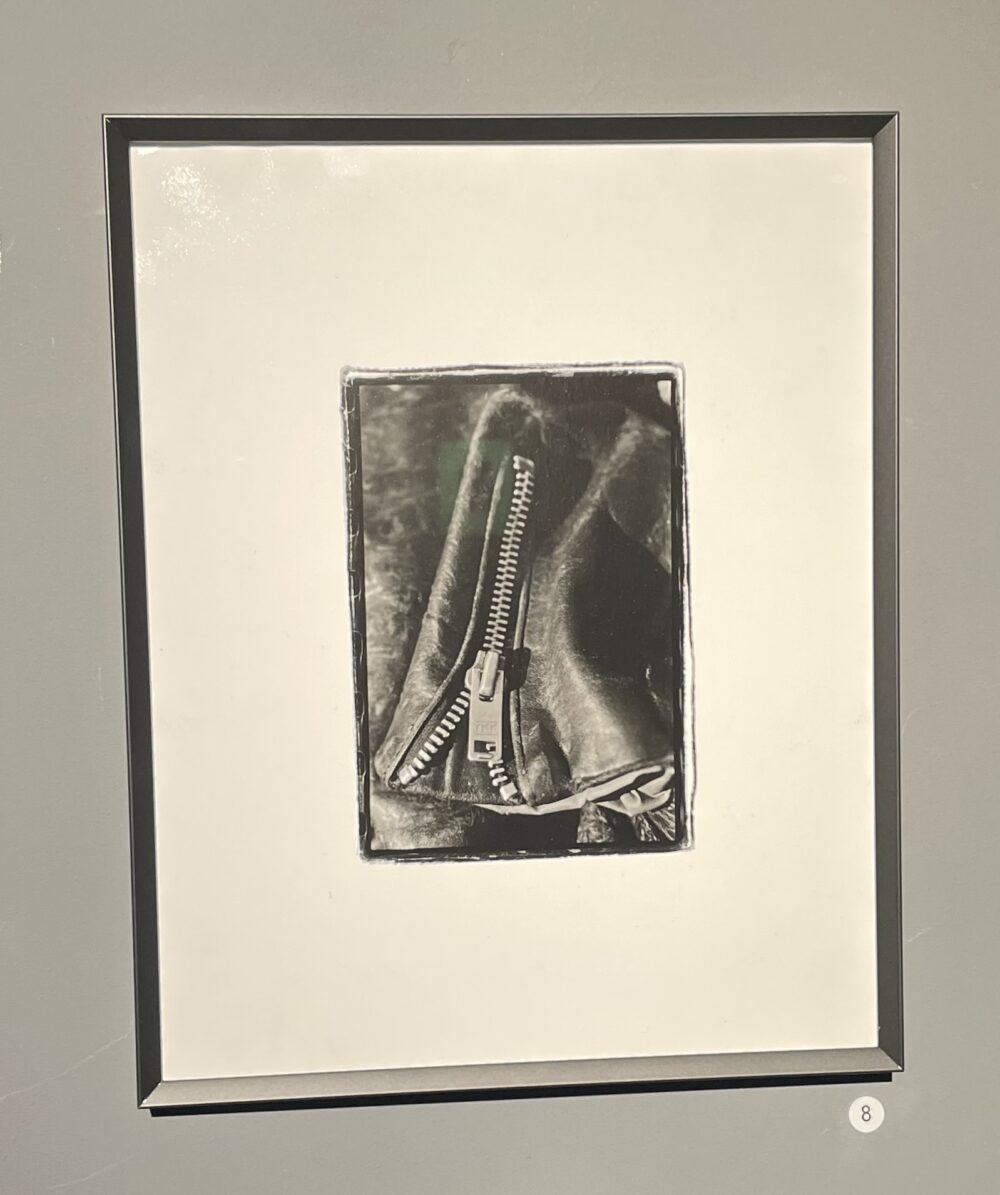
I’m pleased that the artist pursued her vision and that the gallery wasn’t shy of putting on a solo exhibition of work that’s a little less obvious. The result of both things is that some of the work featured will fail to connect with some of the audience. In this case, I’m afraid that applies to me.
900 miles (from Home) continues at the Northern Gallery for Contemporary Art until 21 January.
This post was filed under: Art, Post-a-day 2023, Jade Sweeting, Northern Gallery for Contemporary Art, Sunderland.
The National Glass Centre has curated an exhibition to show the influence of international studio glass styles and techniques on the British studio glass scene. It features work representing the practice in thirty different countries.
Here are three objects that stood out.
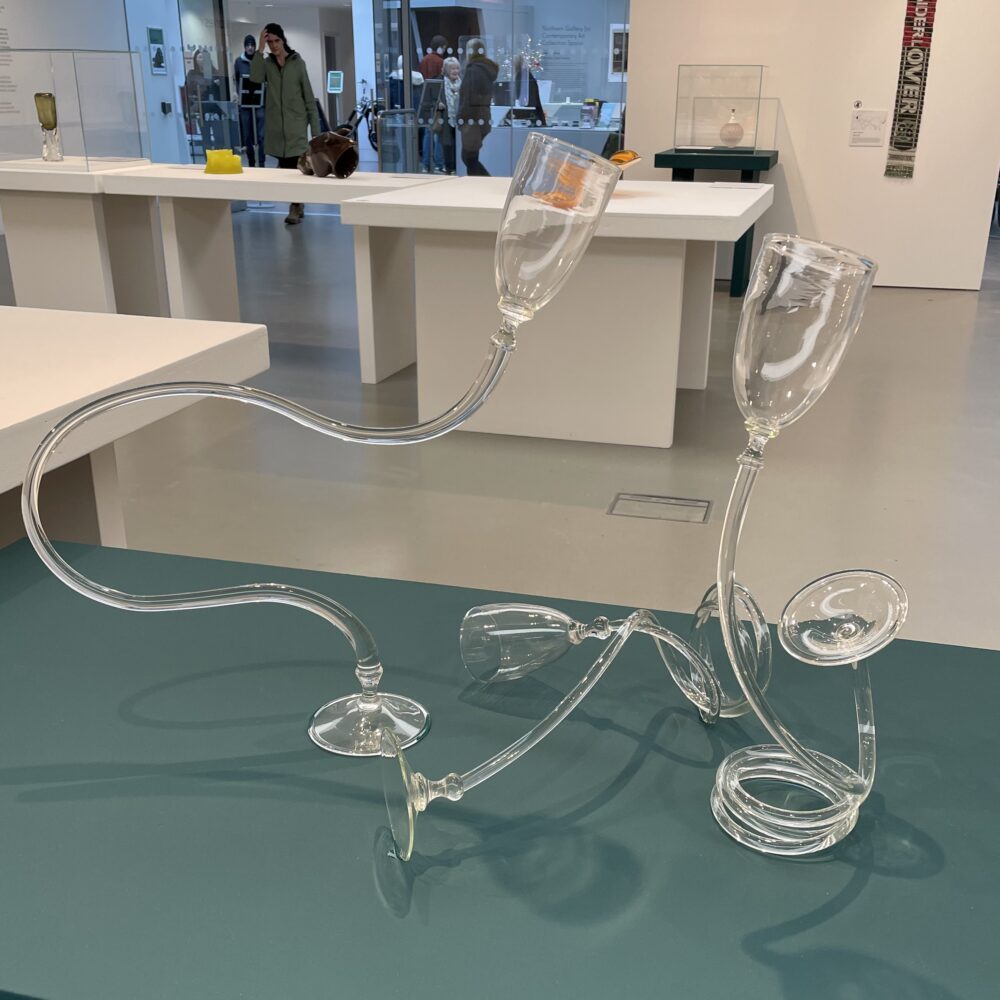
This is Dancing Goblets, a 2021 work by Sacha Delabre. Delabre grew up in France and studied for a BA in Glass on the internationally renowned programme at Sunderland University. He now works at the Glass Hub down in Wiltshire.
I’ve previously seen the left-most of the three goblets exhibited on its own. I was taken by its surrealist form. Seeing these three pieces together brings out the dynamism of the dancing. They are wonderful.
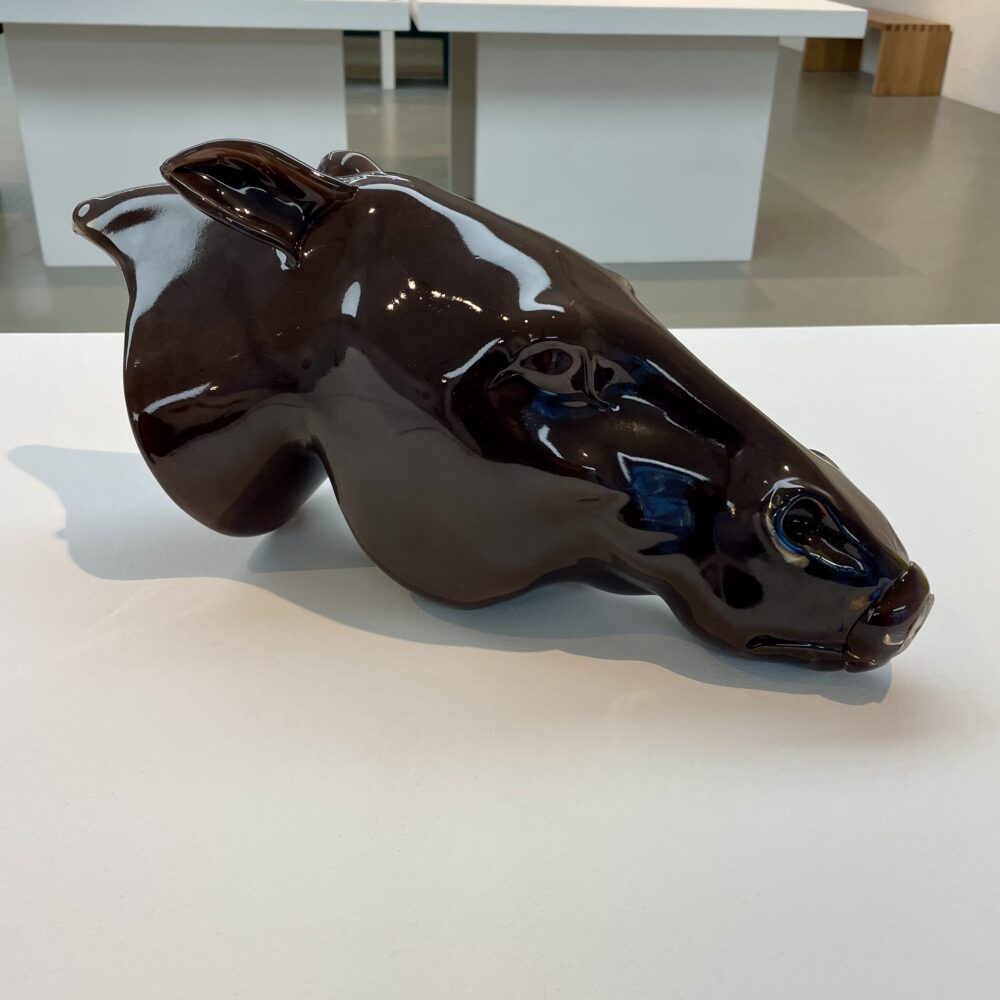
I didn’t react as emotionally to this 2016 untitled work by Czechia’s Martin Janecký, but I was amazed. The detail and complexity of the large form seemed incredible.
My visit to the exhibition of work by Neil Wilkin and Rachael Woodman earlier this year taught me something about the challenge of working with glass. It is hard to comprehend how Janecký made such a detailed, lifelike form from such an uncompromising material.
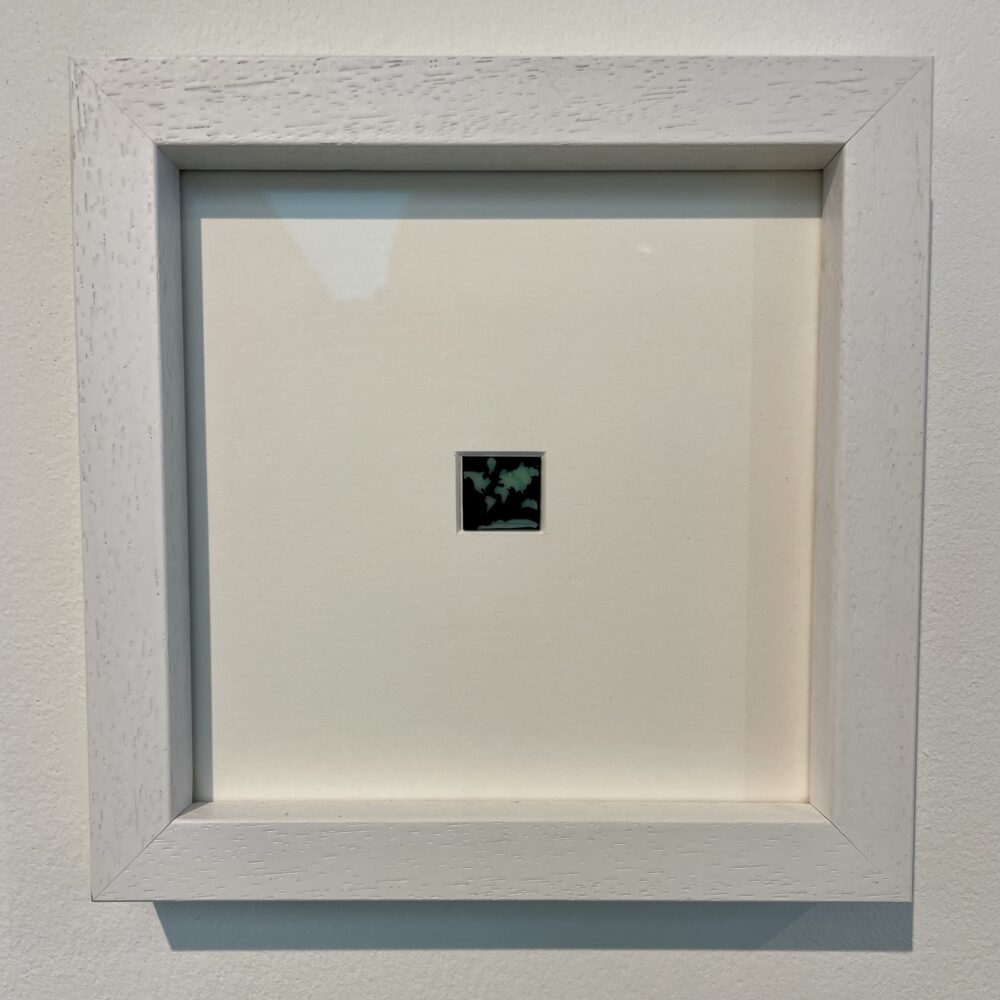
Map of the World, diminished by Inge Panneels is a tiny 2023 work, perhaps only a couple of centimetres square. Slightly cheekily, this work apparently represented Belgium, Scotland and England on the basis that Panneels is from Belgium, taught in Sunderland and works in Scotland.
This stood out to me, combining the aspects I liked in the previous two works. It is surrealist: the practical map is rendered impractical through its tiny size. It’s also an astoundingly detailed representation of a familiar form rendered in an uncompromising material. It’s brilliant.
Glass World continues at the National Glass Centre until 10 March.
This post was filed under: Art, Post-a-day 2023, Inge Panneels, Martin Janecký, National Glass Centre, Sacha Delabre, Sunderland.
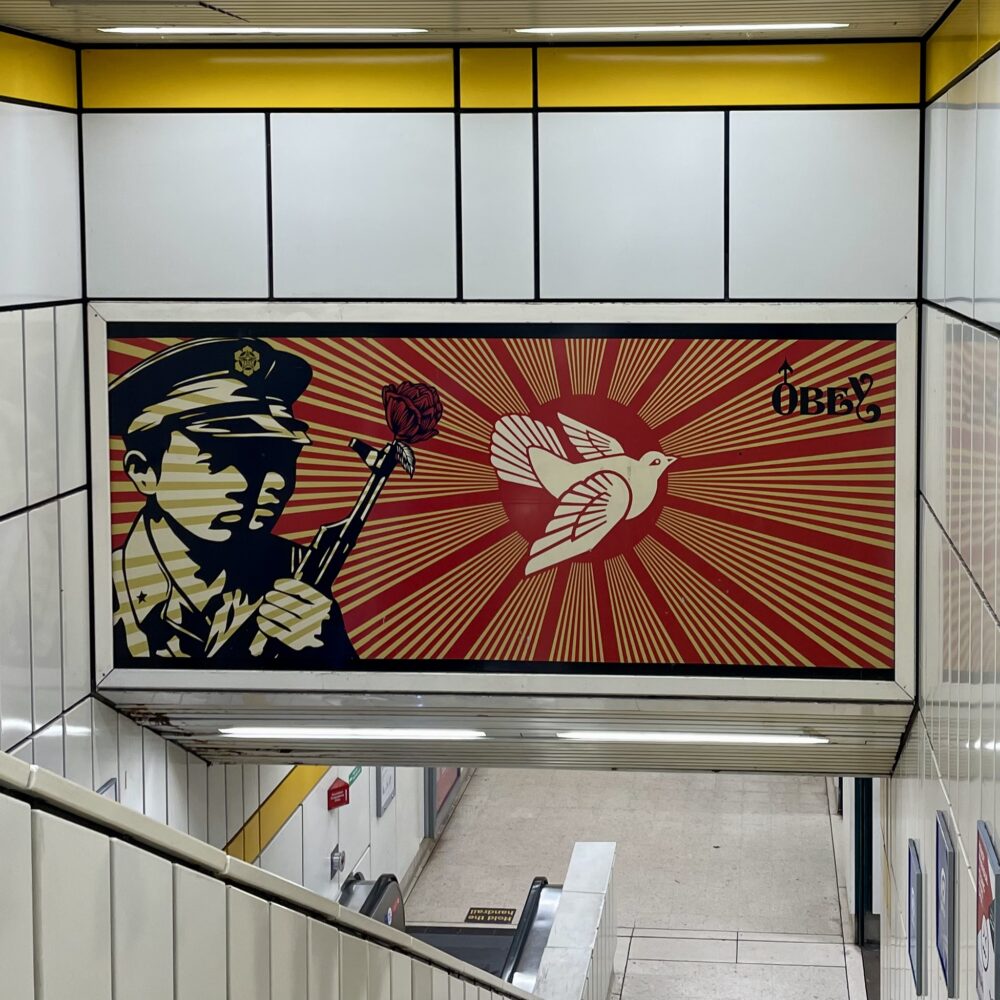
I’ve walked past this artwork at Regent Centre station on the Tyne & Wear Metro many times. Yet, it’s only this week that I learned it was by Shepard Fairey, better known for the Barack Obama “Hope” poster.
‘Obey’ was installed in 2006 as part of the Baltic’s ‘Spank the Monkey’ exhibition of urban art, but is still missing from the online list of Metro art works.
This post was filed under: Art, Post-a-day 2023, Baltic, Metro, Shepard Fairey.
The content of this site is copyright protected by a Creative Commons License, with some rights reserved. All trademarks, images and logos remain the property of their respective owners. The accuracy of information on this site is in no way guaranteed. Opinions expressed are solely those of the author. No responsibility can be accepted for any loss or damage caused by reliance on the information provided by this site. Information about cookies and the handling of emails submitted for the 'new posts by email' service can be found in the privacy policy. This site uses affiliate links: if you buy something via a link on this site, I might get a small percentage in commission. Here's hoping.